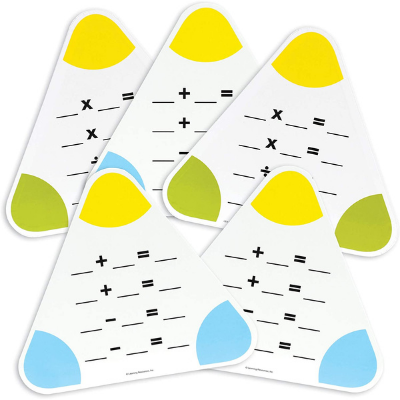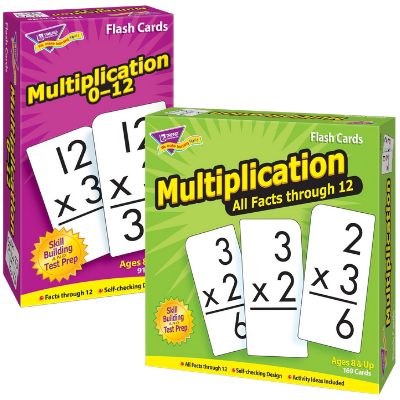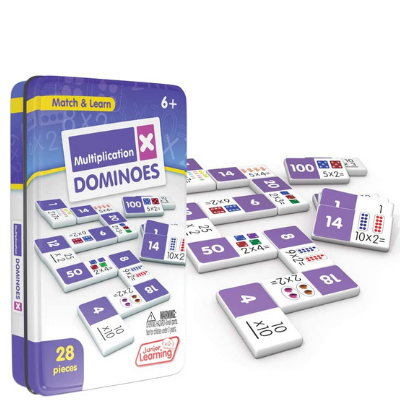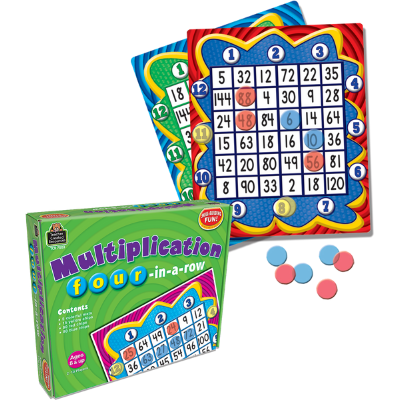
Learning multiplication facts for primary students can be fast and fun when all the senses are involved. “See It, Say It, Write It” ensures students will be able to easily memorize these facts for life! This quick-paced, energetic system works for addition, subtraction, and division in schoolrooms, micro schools, pods, and homeschools.
Supply List
Teachers and parents need only a few supplies for math fact memorization. Start with a dry-erase whiteboard 3 ft. x 4 ft. or larger mounted on your wall with just two nails. Set up a couple of tables or desks for the children where they can see and access the whiteboard. You will need a set of:
- Multiplication flashcards
- Wide-ruled lined paper
- Sharpened pencils
- Multiplication facts practice
See It!
Keep your “See It!” teaching lively and quick. Choose one set of facts to concentrate on each day. We will use 6 as an example. Once children are settled and have turned on their “math brains,” write 6 x 1 and say, “Six times one is __?” Let the students answer, then move quickly to 6 x 2, etc., all the way through 12. As you go, teach tricks, like, “6 x 4 is 24” – “there’s a four in the answer so you can rhyme it,” and “6 x 6 is 36 – look, there’s a six in the answer.” “6 x 8 is 48, another rhyme!” Use body language with a little dance move for the rhyming ones.
Remind them that 6 x 5 will either end in a zero or a five (a fun clue – even numbers times five always end in zero, and odd numbers always end in five), and that whenever a number is multiplied by nine, the digits in the answer will add up to nine! “The mystery of the nines” is intriguing to them.
Say It!
When all of the facts are on the board, then have the students read them together, “Six times one is six, etc.” Explain that you always say the number on the bottom first. As they say it aloud, they are also hearing it.
At the top of the board, say and write the “Sixes Sequence,” 6-12-18-24-30-36-42-48-54-60-66-72.
Have your child come to the board and write the facts answers in the problems you first wrote. As they do the problems, have them say it, “Six times three is eighteen, etc.” With a small group, each child can work at the board. Make sure their ones and tens are lined up correctly. Some students can also write the “Sixes Sequence.”
Write It!
Now for the Write It! portion of your lesson. On wide-ruled notebook paper, have the children neatly write the “Sixes Sequence” and all of the 6x fact problems and answers from the board. If time allows, have them read their answers back to you.
At this point, pass out a simple Math Facts review sheet from Evan-Moor’s Basic Math Skills for grades 1–6 with all of the facts up through the lesson you just taught. For example, ones through sixes if you have covered those. Keep reviewing what you have learned every day. If you find that the sixes need another day, then do it again tomorrow before moving on to the sevens.
Tips and Free printables
 Free Multiplication Table Chart: For those who need help, print out and give them this free multiplication table chart from Evan-Moor.
Free Multiplication Table Chart: For those who need help, print out and give them this free multiplication table chart from Evan-Moor.
To round out your learning session, do a quick multiplication flashcard game, where you quickly flash the cards to each student, let them have a chance, then the next, etc. You can find flashcards here:
 Download these free multiplication flashcards from Evan-Moor.
Download these free multiplication flashcards from Evan-Moor.
A fun way to reward their good work is with a bag of Skittles, raisins, nuts, or any small treat that the students make into a multiplication problem. For example, “William, show me three times four with your Skittles.” Make sure he creates three groups of four. Then ask him, “William, now show me four times three.”
The key to “See It, Say It, Write It!” is repetition, repetition, repetition. Go all the way through to twelves. Yes, second and third graders can do this, and older students will appreciate the pace. Keep reviewing previous lessons. Have fun with the doubles: 4 x 4 and 8 x 8, with some of your math whizzes memorizing 10 x 10, 15 x 15, 20 x 20, and 25 x 25!
More Math Practice Products

Write & Wipe Fact Family Boards
Familiar triangle format reinforces fact families and number fact fluency. Double-sided, write & wipe boards focus on addition/subtraction on one side, multiplication/division on reverse. Support algebraic skills such as equations, the commutative property and problem solving.



See It, Say It, Write It! A Guide to Learning Math Facts